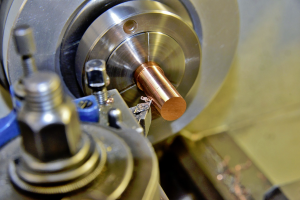Keeping your machinery in tip top condition is essential if you want your business to flourish, because it is better to prevent downtime through regular maintenance rather than waiting until disaster strikes before acting.
Following this five-step checklist will let you know whether you are adequately fulfilling your preventative maintenance responsibilities, so read on for a brief guide to vital machinery upkeep.

Track current performance levels
It is a good idea to get a baseline for how well your current maintenance efforts are performing, so that you can reliably measure whether the changes you make deliver the desired improvements.
Calculate things like mean time to repair (MTTR) and also work out which aspects of your operations will be in need of maintenance most regularly, as well as how the scheduled downtime this involves will impact other departments.
Understand the common types of maintenance strategy
As explained in this guide to preventative maintenance, there are three main examples of strategic maintenance to consider employing.
First up is time-based maintenance, which involves precautionary work being carried out on machinery to a fixed schedule. This could be a daily, weekly or monthly plan, or even something you do once a quarter; it depends entirely on the gear in question.
Next is usage-based maintenance, which you might be familiar with if you own a car or run a fleet of vehicles. After a piece of equipment hits a usage milestone, whether that be miles covered or hours operated, maintenance is triggered.
Lastly there’s condition-based maintenance, which relies on regular monitoring of the condition of the machinery and uses the insights of technicians, or automated sensors and software alerts, to initiate work.
Read manufacturer documentation
The good news is that in most cases you will not need to conjure up your own plans for machinery maintenance scheduling and best practices from thin air. The original manufacturer will have created a suitable plan for this, based on the design parameters and anticipated uses of the product in question.
That does not mean you should be totally reliant on this, regardless of the condition, performance and track record of your machinery. However, it is still a useful starting point for creating your own policies.
Clean frequently and thoroughly
Aside from the manufacturer-specific instructions for maintenance, one of the best steps you can take to keep your assets in good working order is to clean them regularly. Machinery usually generates dust, waste material and other types of industrial debris, which if left unchecked can compromise fragile components.
Doing this on a daily basis at minimum, or preferably in between shifts throughout the working day, will prolong the viability of all sorts of gear. And as with all preventive maintenance tactics, it will keep costs down by staving off bigger issues.
Carry out visual checks & don’t ignore symptoms of wear and tear
Last of all, use your common sense and look out for the signs of wear and tear that will inevitably accumulate over time on heavy machinery. From worn or chipped tools to abraded belts and inadequately lubricated moving parts, all sorts of preventative maintenance can be initiated if you know what to look for.
Likewise, if you or one of your employees mentions that the machinery is not performing as expected, or exhibiting signs that something is awry, do not brush this under the carpet. Odd squeaks, rattles and vibrations are better diagnosed and dealt with sooner rather than later.
In short, be proactive with your preventative maintenance and play the hand you’re dealt, rather than rigidly following schedules when it is obvious that repairs are necessary.











